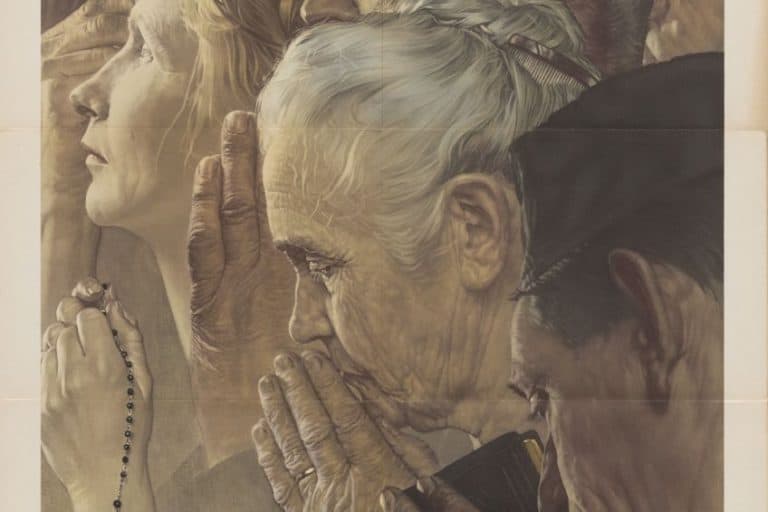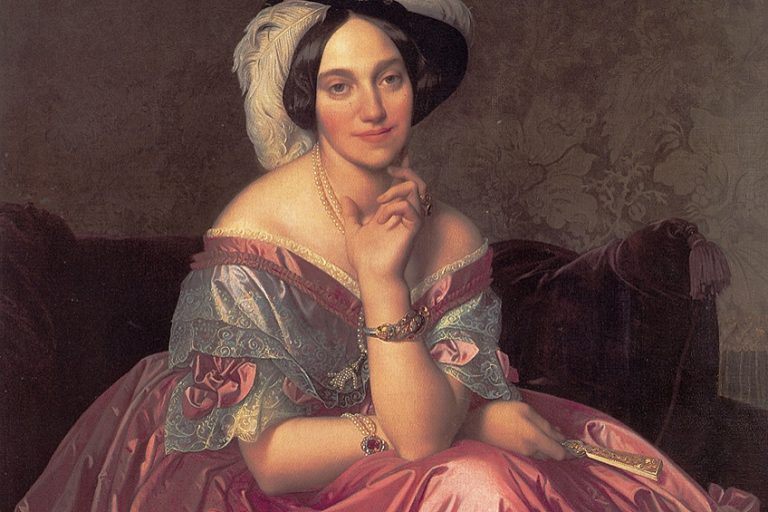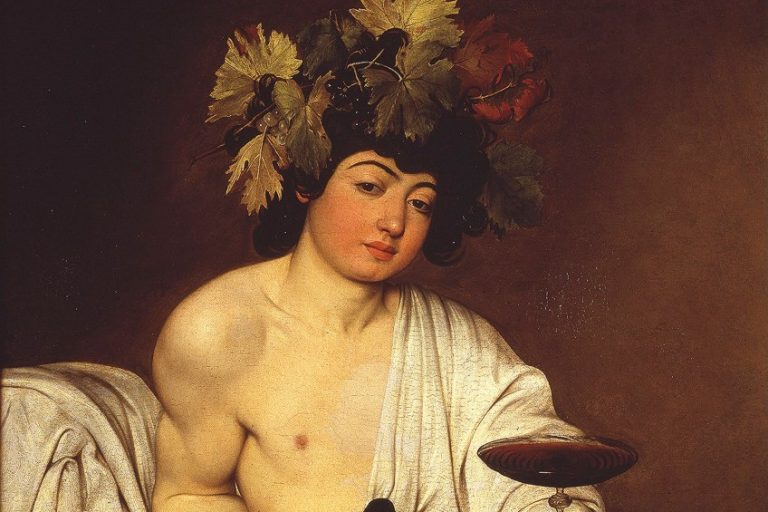Famous Asian Paintings – A Look at the Best Traditional Asian Art
When discussing the history of traditional Asian artwork, it is difficult to categorize it because it has been affected by multiple faiths, civilizations, and customs from diverse nations across the region. Asian artwork is very versatile and ranges from silk and paper paintings and drawings, ink paintings, woodblock prints, sculptures, and ceramics, dating from the era of ancient Asian art all the way to contemporary Asian art. Several of the finest Asian artists are also trailblazers in their professions, generations more advanced than their Western contemporaries.
Table of Contents
- 1 What Is Asian Art?
- 2 Famous Asian Paintings
- 2.1 The Nymph of the Luo River (c. 1000 CE) by Gu Kaizhi
- 2.2 Travelers Among Mountains and Streams (c. 1000 CE) by Fan Kuan
- 2.3 A Solitary Temple Amid Clearing Peaks (960 CE) by Li Cheng
- 2.4 Court Ladies Adorning Their Hair with Flowers (c. 750 CE) by Zhou Fang
- 2.5 Five Oxen (c. 8th Century) by Han Huang
- 2.6 The Night Revels of Han Xizai (c. 10th Century) by Gu Hongzhong
- 2.7 Emperor Taizong Receiving the Tibetan Envoy (c. 14th century) by Yan Liben
- 2.8 The Dreams of the Fisherman’s Wife (1814) by Katsushika Hokusai
- 2.9 Tiger (1878) by Kawanabe Kyosai
- 2.10 Fuji From Kawaguchi Lake (1926) by Hiroshi Yoshida
- 2.11 Mother and Child (1934) by Uemura Shōen
- 2.12 Sunrise over the Eastern Sea (1935) by Fujishima Takeji
- 2.13 Ready to Blossom in the Morning (1989) by Yayoi Kusama
- 3 Frequently asked Questions
What Is Asian Art?
Traditional Asian artwork spans centuries and scores of nations, and it is diversified and complex. It is famous for its ceremonial bronzes, exquisite pottery, jades, fabrics, decorated vistas, garden design, intricate goldwork, magnificent structures, printmaking, shadow puppetry, and calligraphy. Asian art and culture are united by significant ideological traditions of philosophy and language systems. The continent is huge and encompasses many countries and various mediums. In order to narrow our article down, we will focus on the artworks from China and Japan specifically.
China is among the most distinctive ethnic cultures on the planet, as evidenced by the country’s illustrious art history.
Chinese art, which dates back centuries, was focused on several various topics, including landscapes, wildlife, and other beauty that were represented in meticulous precision. The most prominent Chinese painting technique is regarded as a classic technique of presenting diverse subjects that were frequently integrated with calligraphy. Chinese paintings, rather than being done on big, flat canvases, were primarily made on enormous scrolls that were hung for the exhibition. There were painters who used folding sheets and other ways, such as huge murals.
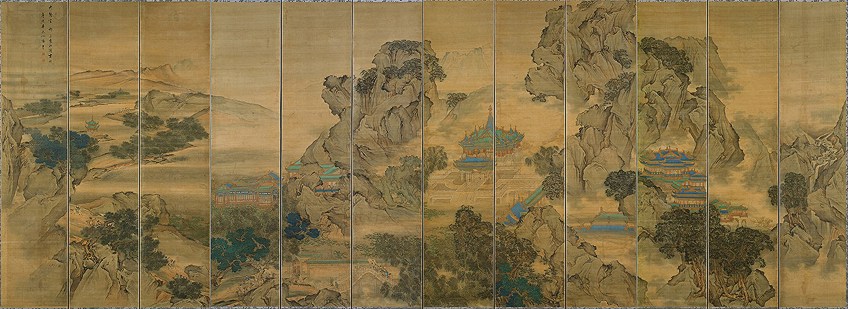
It is a well-established truth that Japan was relatively secluded for centuries – this was due not just to terrain, but also to the prevailing Japanese cultural propensity for seclusion, which shaped the country’s culture. Throughout the ages of what we may term “Japanese culture,” art and literature developed independently of those in the rest of the globe. This is also evident in Japanese painting techniques. Nihonga paintings, for instance, are a major output of Japanese painting tradition. It is based on over a thousand-year-old customs, and the artworks are generally done on Japanese paper or silk using brushes.
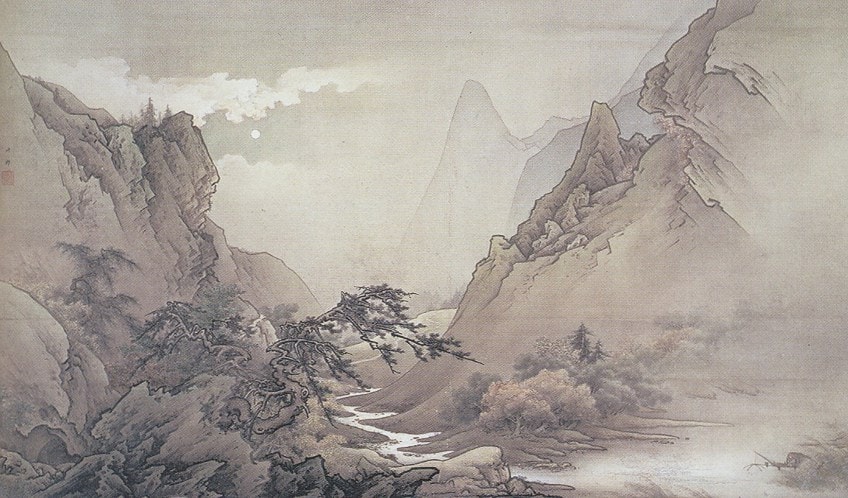
Famous Asian Paintings
Now we will discover some of the most famous Asian paintings. These traditional Asian artworks originate from China and Japan. They represent some of the most beautiful and important artworks from the continent.
The Nymph of the Luo River (c. 1000 CE) by Gu Kaizhi
| Country of Origin | China |
| Date Created | c. 1000 CE |
| Medium | Ink on Silk |
| Current Location | Palace Museum, Beijing |
This painting comes as a four-part scroll, although regrettably, the original fourth artwork has been lost. Asian artists, however, produced many replicas of the famous Asian artwork, most likely during the Song period (960–1279). The picture is in the shape of a lengthy scroll, with parts describing the story. As with other Chinese handscrolls, viewing them from right to left is the best way to comprehend their content.
Cao Zhi goes with a band of assistants at first and must cross the Luo River. Gu Kaizhi lets his creative ideas run wild here.
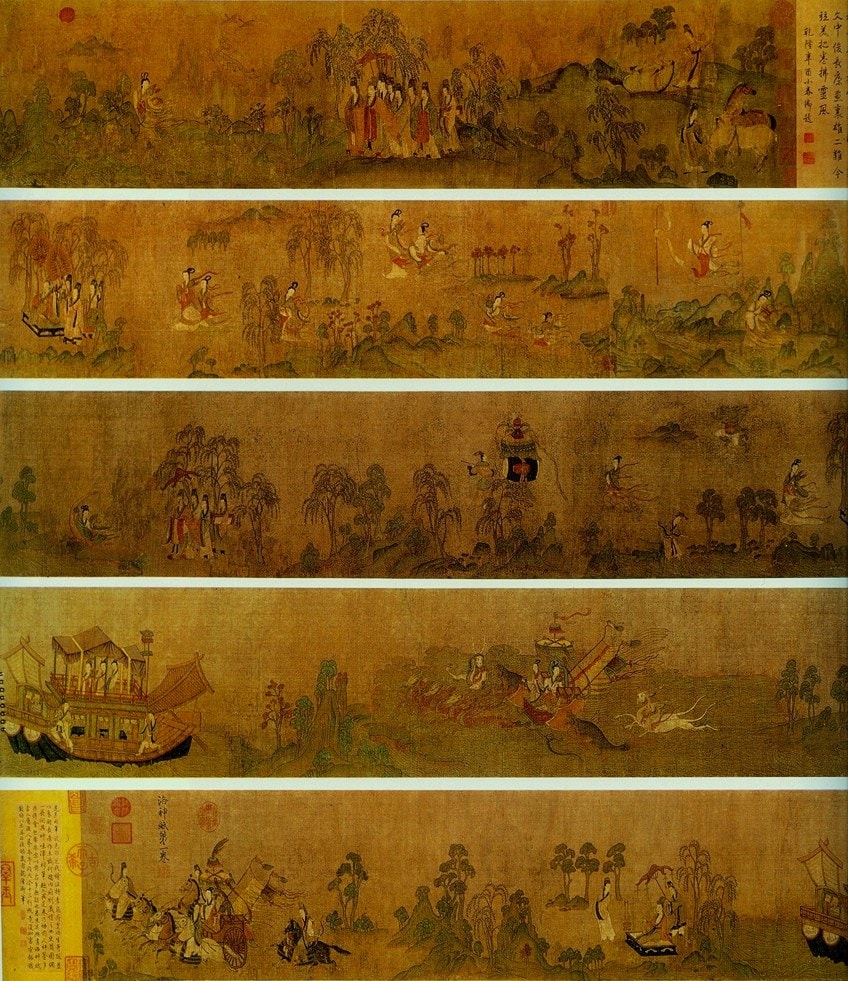
He portrays the encounter of Cao Zhi and the nymph, Fu Fei, via creative arrangement and the use of vibrant colors. She moves slowly and pauses when she chooses to. The heir to the throne then discovers that Fu Fei is a nymph. Cao is captivated by Fu Fei’s attractiveness and becomes infatuated with her. The nymph, on the other hand, is elegant; she alternates between floating in the sea and flying in the skies. Fu Fei is dancing and singing in the sky, and she and Cao Zhi are both aware of one another.
Unfortunately, the destinies of gods and mortals diverge.
Travelers Among Mountains and Streams (c. 1000 CE) by Fan Kuan
| Country of Origin | China |
| Date Created | c. 1000 CE |
| Medium | Ink on Silk |
| Current Location | National Palace Museum |
Fan Kuan embodied all that was held in high regard as a real Chinese master painter. He was renowned for being a nature enthusiast who would spend extended periods of time solo in the hills or other natural regions of mainland China. Although there are few further facts regarding Kuan, one may get a good image of him via the numerous artworks he created during the Song Dynasty just after 1000 C.E.
Many Asian artists retreated to the protection and isolation of the highlands during the turmoil of the Five Dynasties period.

Kuan appears to have been one of them since several of his works depict beautiful vistas of mountain settings. Travelers Among Mountains and Streams is his most well-known work, and it is undoubtedly one of the most renowned Chinese artworks ever created. The artwork is supposed to depict the southern Shaanxi region. At the bottom, there is a huge rock wall flanked by huge boulders. The many degrees of viewpoint are intended to convey the immensity of the Chinese countryside in all its splendor.
A Solitary Temple Amid Clearing Peaks (960 CE) by Li Cheng
| Country of Origin | China |
| Date Created | 960 CE |
| Medium | Ink on Silk |
| Current Location | Museum of Art, Kansas City |
Another renowned Chinese artwork was created on a huge hanging scroll in the 10th century by an artist named Li Cheng. This piece, titled A Solitary Temple Amid Clearing Peaks, depicts a magnificent panoramic picture with a mountain town bordered by a soaring outcropping far above all the traditional Chinese Architecture. This is one of the few extant artworks that are thought to have been created by Cheng.
The image is thought to have accurately shown living in the isolated highland communities of Cheng’s historical period.
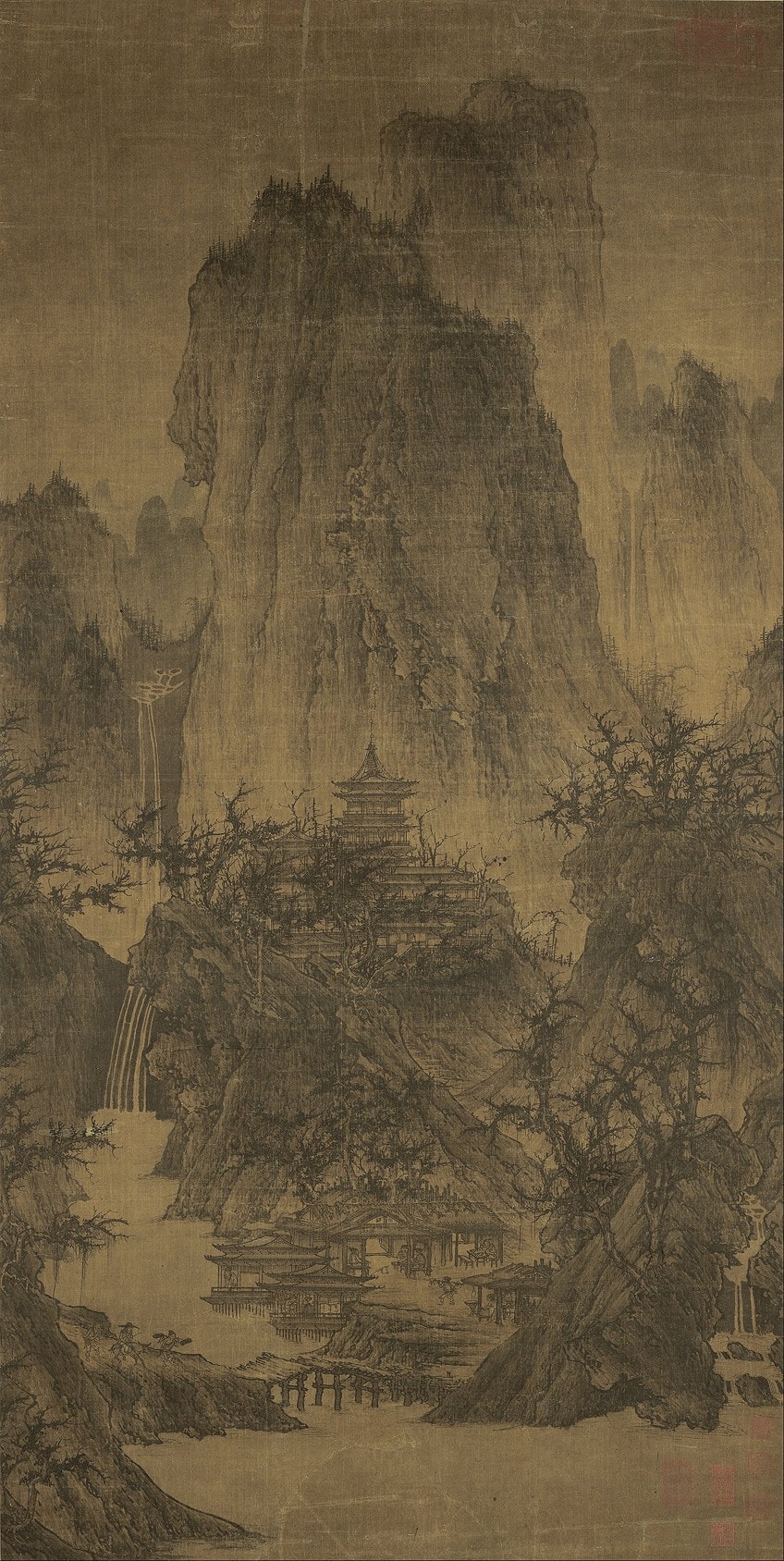
He created this piece with amazing precision, even down to the smallest tree limb and the vapor rising from the ravine below. It’s a massive mountain scene with a temple in the center and a bustle of human activities towards the bottom. The painter developed and created the image with accuracy and competence, conveying the gravity and dimension of the setting. The brushwork depicts nature’s movement, and the artist’s mastery over the ink enables the architectural components to interact with the surrounding twisted trees, rivers, and mist-covered hills.
This 10th-century Chinese landscape is a world-class masterpiece due to its superb brushwork and colossal arrangement.
Court Ladies Adorning Their Hair with Flowers (c. 750 CE) by Zhou Fang
| Country of Origin | China |
| Date Created | c. 750 CE |
| Medium | Ink on Silk |
| Current Location | Liaoning Provincial Museum, Shenyang |
China had a thriving economy and a thriving culture during the Tang period. The style of “attractive ladies painting” was prominent during this time period. Zhou Fang, who comes from a noble family, wrote works in this genre. His artwork depicts feminine beauty standards and time-honored practices. The concept of feminine attractiveness was represented by a luscious figure. As a result, Zhou Fang portrayed Chinese imperial women with round features and fat bodies.
The females are clothed in large, loose-fitting robes with translucent gauzes over them. Their gowns are embellished with floral or geometric patterns.

Their brows resemble the wings of butterflies. Their eyes are narrow, their noses are big, and their lips are tiny. Their hair is styled in a topknot with blooms such as peony or lotuses. The females also have a fair appearance due to the use of natural colorants on their skin. Although Zhou Fang presents the females as pieces of art, this superficiality simply adds to the sexiness of the women.
Five Oxen (c. 8th Century) by Han Huang
| Country of Origin | China |
| Date Created | c. 8th century |
| Medium | Ink on Paper |
| Current Location | Palace Museum, Beijing |
Han Huang, a Tang dynasty regent, created his Five Oxen in various forms from right to left. They wait in line, either cheerful or sad. Each picture may be treated as a separate artwork. The oxen, on the other hand, constitute a cohesive whole. Han Huang paid close attention to the nuances. Horns, eyes, and emotions, for example, reveal distinct characteristics of the oxen. They all have interesting personalities, much like five brothers.
We don’t know why the artist painted “Five Oxen”.

Horse art was popular throughout the Tang dynasty and was supported by the imperial court. Ox art, on the other hand, was historically seen to be an inappropriate topic for a man. Han Huang, did you compare yourself to the bull with a rein? He might suggest that he chose a refuge and a peaceful life on the mountain by placing the ox alongside the bush in the same image. However, given his job and high status, Han Huang was unlikely to wish to withdraw into isolation. As a result, by portraying the ox with a rein, he could demonstrate his devotion to the emperor.
The Night Revels of Han Xizai (c. 10th Century) by Gu Hongzhong
| Country of Origin | China |
| Date Created | c. 10th century |
| Medium | Ink on Silk |
| Current Location | Palace Museum, Beijing |
The Emperor’s official kept missing important meetings and was hesitant to become the prime minister, so he sent an artist to go and check up on what he was doing and create a painting of the official’s actions. The official had become disillusioned with the government. He declined to serve, preferring to have fun and appreciate his life. Gu Hongzhong tells a continual narrative, portraying the entire situation as if it were a story. As the scenario proceeds, the artwork is separated into portions by the screens, which act as dividers.
The picture has around 40 people, all of whom are lifelike and have distinct emotions.

In the opening scene, for example, we see Han Xizai wearing a long black hat, and listening to a Chinese musical instrument. The individual dressed in crimson is a Chinese academic. Han Xizai is shown in the following scene banging a drum for dancing. After a short pause, he proceeds to enjoy himself by listening to music while his companions converse with the performers. Gu Hongzhong organizes the piece deftly. Each scene is very self-contained, yet the overall composition is cohesive. To indicate the time, the artist inserts a candlestick in one of the images.
This picture appears to be about private life at first sight. Nevertheless, it also alluded to numerous practices of the time.
Emperor Taizong Receiving the Tibetan Envoy (c. 14th century) by Yan Liben
| Country of Origin | China |
| Date Created | c. 14th century |
| Medium | Ink on Silk |
| Current Location | Palace Museum, Beijing |
Tibet revered China’s Tang dynasty in the 7th century. During an official royal trip to China, Tibetan King Songtsen Gampo fell madly in love with and sought the hand of Princess Wencheng. He dispatched delegations and gifts to China, but they were turned down. As a result, Campo’s troops advanced into China, destroying cities along the way, until they arrived at Luoyang, where the Tang Army crushed the Tibetans. Nonetheless, the Emperor eventually married Princess Wencheng to the King.
Yan Liben, a Chinese painter, depicted the Tang dynasty’s meeting with Tibet in this artwork.

This scroll, like other early Chinese artworks, is most likely a Song period replica of the genuine. The emperor can be seen seated in his carriage in his casual clothes. One individual on the left is a royal court officer. The emperor is held in awe by the terrified Tibetan ambassador in the center. The individual on the far left is a translator. Both Emperor Taizong and the Tibetan minister symbolize opposing viewpoints. As a result, their disparate demeanors and physical features accentuate the composition’s duality.
These distinctions highlight Taizong’s political dominance.
The Dreams of the Fisherman’s Wife (1814) by Katsushika Hokusai
| Country of Origin | Japan |
| Date Created | 1814 |
| Medium | Woodcut |
| Current Location | Kinoe no Komatsu |
According to scholars, the picture would have reminded modern viewers of the story of Princess Tamatori, which was famous throughout the Edo era. She was a humble shell digger in this narrative who married Fujiwara no Fuhito, who is looking for a pearl taken from his ancestors by Ryjin, the monster deity of the ocean. The princess swims down to Ryjin’s undersea castle of Ryg-j, pledging to aid, but is chased by the deity and his legion of marine animals, including octopuses.
She slices into her own breast and inserts the jewel, allowing her to swim faster and flee, but she suffers from her injury shortly after approaching the top.
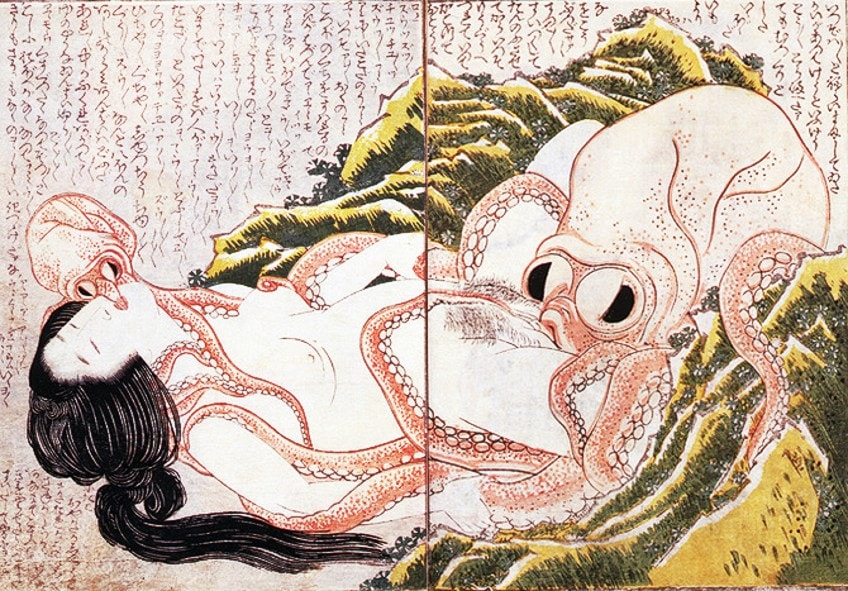
Tamatori’s tale was a prominent theme in ukiyo-e painting. Utagawa Kuniyoshi, the artist, also created paintings based on it, which frequently contain octopuses among the animals dodged by the bare-breasted diver. The huge octopus declares in the writing above Hokusai’s painting that he will carry the girl to Ryjin’s undersea castle, reinforcing the link to the Tamatori tale.
This painting is not the only piece of Edo-period art that depicts romantic connections between a lady and an octopus. Early netsuke sculptures also depict cephalopods pleasuring naked ladies.
Tiger (1878) by Kawanabe Kyosai
| Country of Origin | Japan |
| Date Created | 1878 |
| Medium | Oil on Canvas |
| Current Location | Bridgestone Museum of Art |
Tiger is one of the most recognized artworks in Japan. It is one of many feline-themed works by the artist Kawanabe Kyosai. Kyosai shows an artist’s workshop with all the paraphernalia of an experienced artist, namely inks, brush, and reams of paper, in this painting, which was most likely created to commemorate the entrance of the Year of the Tiger in 1878. Kyosai was well-known for his representations of creatures, and in this print he shows off his talent by depicting a beautiful tiger on a painted screen, creating an image inside an image.
He has skillfully drawn his signature such that it appears on the display’s surface.

Kyosai was a well-known Asian artist during the Edo era. Tohaku, a Kano painter of the 15th century, was the only painter of his day to produce screens completely in ink on a beautiful backdrop of powdered gold, and this artist impacted Kyosai’s work. Although Kyosai is best recognized as a caricaturist, he also painted some of the most famous paintings in Japanese art history throughout the 19th century. Tiger is one of these paintings that Kyosai created using watercolor and ink.
Fuji From Kawaguchi Lake (1926) by Hiroshi Yoshida
| Country of Origin | Japan |
| Date Created | 1926 |
| Medium | Woodblock Print |
| Current Location | Private Collection |
The woodblock print of Kawaguchi Lake is part of the Ten Views of Fuji Series. Yoshida was an ardent explorer, adventurer, and climber, and his prints reflect the grandeur of diverse locations. He was inspired by 19th-century European watercolorists and combined them with Traditional Asian art methods to represent natural settings.
This lithograph portrays Mount Fuji as seen from Kawaguchi Lake at the mountain’s foot. The snowfall on the ground around the reservoir is thawing and forming tiny pools.
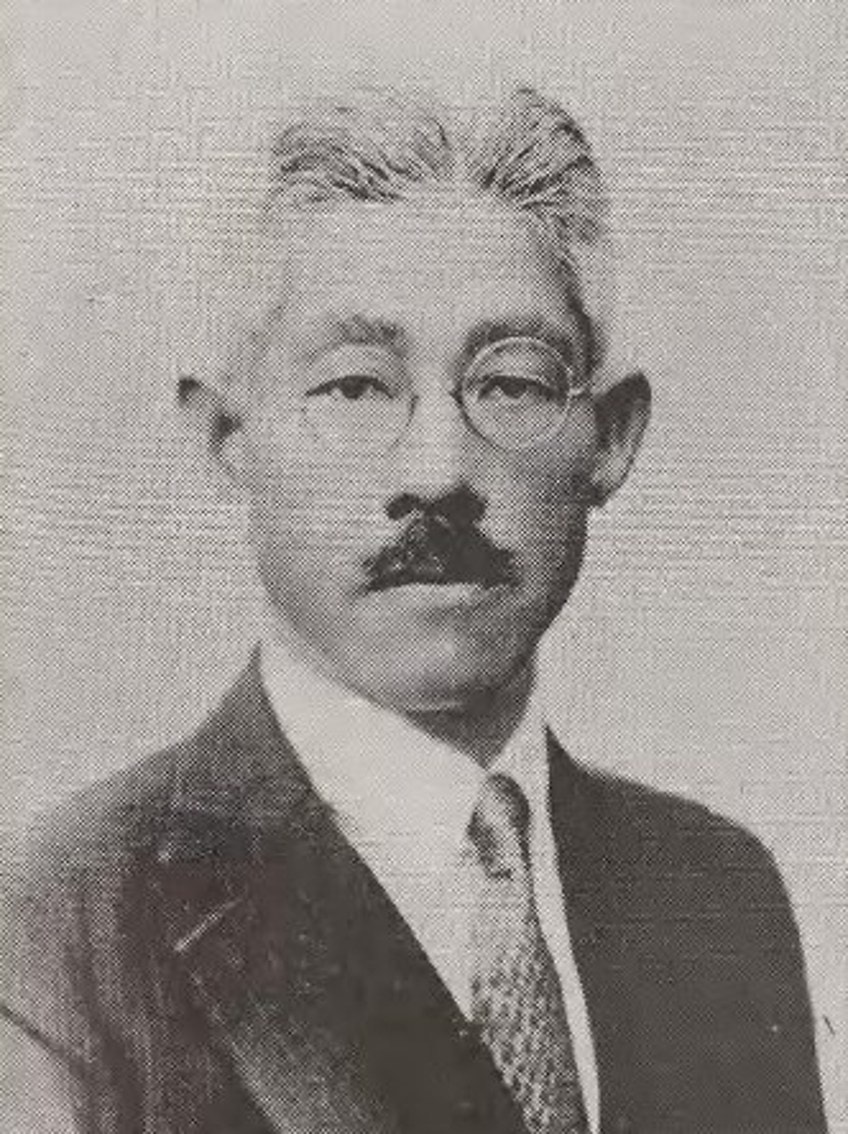
This displays the surroundings near the mountain’s base as well as the weather patterns in the region. Hiroshi Yoshida is regarded as among the most influential individuals in the shin-hanga technique. This was an early 20th-century Japanese art style that revived classical ukiyo-e painting based in the Edo and Meiji eras. He was educated in the Western oil painting technique, which became popular in Japan during the Meiji period.
Mother and Child (1934) by Uemura Shōen
| Country of Origin | Japan |
| Date Created | 1934 |
| Medium | Watercolor |
| Current Location | National Museum of Modern Art, Tokyo |
Taking care of children, as anybody who has ever been around them knows, is not glamorous. They’re snot-covered, squirming, and crying. But that’s precisely why, when it originally debuted in 1934 at the Imperial Academy’s Art Exhibition, this work blew everyone away. Uemura Shen, the painter behind this piece, became a “wayward parent” early in her profession. Ever since then Uemura’s mother has been her staunchest backer and admirer.
Even when things became rough and Uemura became the target of sexist abuse, her mother remained there for her. Unfortunately, her mother died at the conclusion of Uemura’s career.
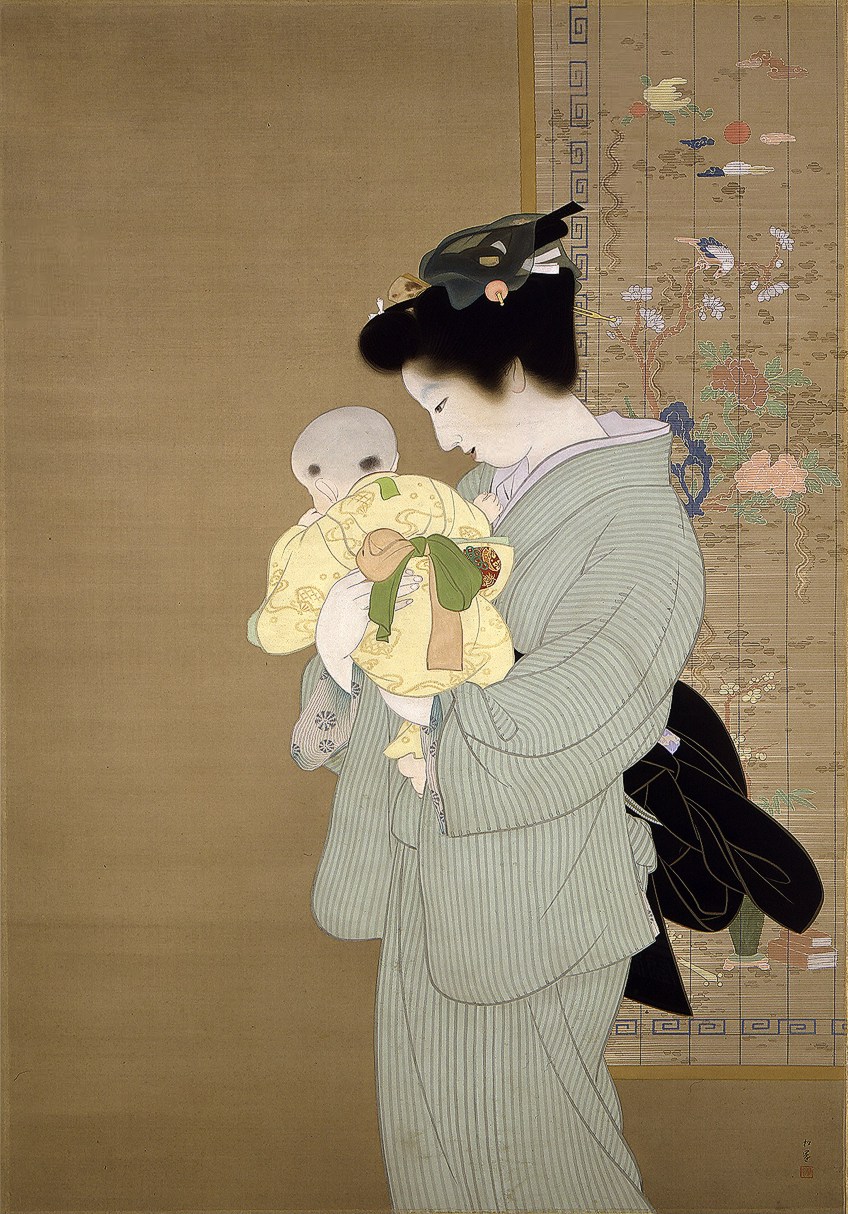
This piece was created the same year Uemura buried her mother. It blew people’s minds when it originally aired since it was the first time an ordinary scenario was treated with such elegance. You’d never guess it by looking at this mom, but she was just your ordinary everyday parent. Uemura treated this woman with the respect that every frantic baby-wrangling mother needs, painting her as if she were a socialite born to be honored.
Sunrise over the Eastern Sea (1935) by Fujishima Takeji
| Country of Origin | Japan |
| Date Created | 1935 |
| Medium | Oil on Canvas |
| Current Location | Bridgestone Museum of Art |
In honor of the Showa Emperor’s ascension to the throne, Fujishima Takeji was commissioned to create a piece to adorn the emperor’s office in 1928. Fujishima picked “dawn” as the motif for the next monarch. In Dolonnor, Inner Mongolia, he sketched the sunrise over the desert. In the decade before it, he had searched for sunrises everywhere, from Mt. Zao in the north to Taiwan’s Yu Shan (then the greatest summit in Mainland Japan) in the south, creating several works that explored highlands, ocean, and dawn. In his fifties, daybreak was his most significant topic.
This is a superb example of dawn and seascapes from that era.

Fujishima often advised younger painters that the French phrase simplicité was a vital component to making artworks. He believed in removing unnecessary parts one by one. What couldn’t be eliminated had to be painted. In this picture, we can see evidence of his obsession with simplicité taken to its logical conclusion. It’s so concise that if the one boat on the left were removed, it might be an art piece. We only have four color plane layers: base, ocean, cloud, air, and cloud cover again.
The sun is about to rise beyond the horizon, yet the artwork directs the audience’s eye away from the light and onto the pure machinations of the cosmos.
Ready to Blossom in the Morning (1989) by Yayoi Kusama
| Country of Origin | Japan |
| Date Created | 1989 |
| Medium | Lithograph |
| Current Location | Private Collection |
Yayoi Kusama’s amazing artwork Ready to Blossom in the Morning was produced in 1989. She is best known for her use of thick polka dot and net designs, as well as her dramatic, large-scale settings. She relocated to her own country in 1973 after earning popularity via revolutionary exhibits and art happenings,” and has become one of the most recognized modern artists in Japan.
As a youthful suffering painter in New York in 1959, Kusama created her first astounding paintings—vast paintings up to 33 feet wide, totally covered with rhythmic vibrations of tiny, densely painted circles.

The innate metaphysical dilemma of these works of art “infinity” could be measured and constricted within the random framework of a pre-made canvas – along with the more open to interpretation and obsessive behavior repercussions of their process set these works apart from Minimalist abstraction, which would monopolize the art scene in New York a few years later.
And that concludes our list of famous Asian paintings. Ranging from traditional Asian artworks to more contemporary pieces, we have covered some of the amazing Asian artists from China and Japan. These artworks show much development and growth from the earlier ancient Asian artworks.
Take a look at our Asian paintings webstory here!
Frequently asked Questions
What Is Asian Art?
Traditional Asian artwork spans centuries and scores of nations, and it is diversified and complex. Asian art and culture are united by significant ideological traditions of philosophy and language systems. The continent is huge and encompasses many countries and various mediums.
Where Does Asian Art Come From?
Asian art comes from countries within the continent of Asia. This continent is huge and covers not only China, but also Japan, Korea, and many more areas. Ancient Asian art is still highly revered today.
Isabella studied at the University of Cape Town in South Africa and graduated with a Bachelor of Arts majoring in English Literature & Language and Psychology. Throughout her undergraduate years, she took Art History as an additional subject and absolutely loved it. Building on from her art history knowledge that began in high school, art has always been a particular area of fascination for her. From learning about artworks previously unknown to her, or sharpening her existing understanding of specific works, the ability to continue learning within this interesting sphere excites her greatly.
Her focal points of interest in art history encompass profiling specific artists and art movements, as it is these areas where she is able to really dig deep into the rich narrative of the art world. Additionally, she particularly enjoys exploring the different artistic styles of the 20th century, as well as the important impact that female artists have had on the development of art history.
Learn more about Isabella Meyer and the Art in Context Team.
Cite this Article
Isabella, Meyer, “Famous Asian Paintings – A Look at the Best Traditional Asian Art.” Art in Context. October 28, 2021. URL: https://artincontext.org/famous-asian-paintings/
Meyer, I. (2021, 28 October). Famous Asian Paintings – A Look at the Best Traditional Asian Art. Art in Context. https://artincontext.org/famous-asian-paintings/
Meyer, Isabella. “Famous Asian Paintings – A Look at the Best Traditional Asian Art.” Art in Context, October 28, 2021. https://artincontext.org/famous-asian-paintings/.






